Wondering how to get your kid to eat meat, if they are getting enough protein, or which meats your child will like best? Learn tricks for kids who don’t like meat.
Meat is a mealtime staple that adds protein, nutrients, and a variety of flavor and texture to your child’s diet. It can “beef up” a menu rotation by increasing the ways to diversify simple dishes for your family.
But many kids find meat difficult to eat, unappealing, or will outright refuse to eat it entirely, leaving parents scrambling to figure out if their kid is eating enough protein, iron, and other nutrients meat provides.
As a feeding therapist, I have seen this situation over and over with my clients and with my own children.
Fortunately, there are ways to incorporate meat into your child’s list of tolerated foods, even for the pickiest eaters. You might even find some new ways to prepare your favorite meat dishes that your kid will love.
Why Your Kid Won’t Eat Meat
Meat is tough for kids, literally!
Parents often share their concerns with me about their child’s difficulty eating meat and it is often perplexing to them why it is so difficult. Try to sit in your child’s seat at the table for a moment… meat is often dry, on the blander side, and requires a lot of chewing.
When you think about it, it really isn’t too surprising that kids often aren’t motivated to eat it.
Of course, there are other protein sources such as cheese, yogurt, beans, tofu, etc, and if you’re a family of vegetarians, that works great.
However, as a parent, if you eat meat, it’s an appropriate expectation for your kids to eat it also. Meat is after all an easy source of protein.
Because of that fact many parents, especially of picky eaters, can find themselves wondering if their child is getting enough protein in their diet without it.
As adults, we often eat things like chicken breast, turkey cutlets, pork loins, and beef roasts. While I don’t advocate for cooking “kid’s food” all the time, having kids does change what we make for dinner.
The list I just mentioned are among the most difficult for toddlers to eat and often the least motivating for kids of all ages because they’re challenging and unique textures they aren’t used to.
But, that’s often what we tend to serve.
Don’t get me wrong, I want your family to enjoy these or whatever meats your family typically prepares, but you may need to lay a little ground work first. Let’s move onto some specifics…
* If you are vegans or vegetarians, then that’s a different circumstance, and it’s up to you if you want to encourage meat eating or not because kids can have healthy and nutritious diets without meat.
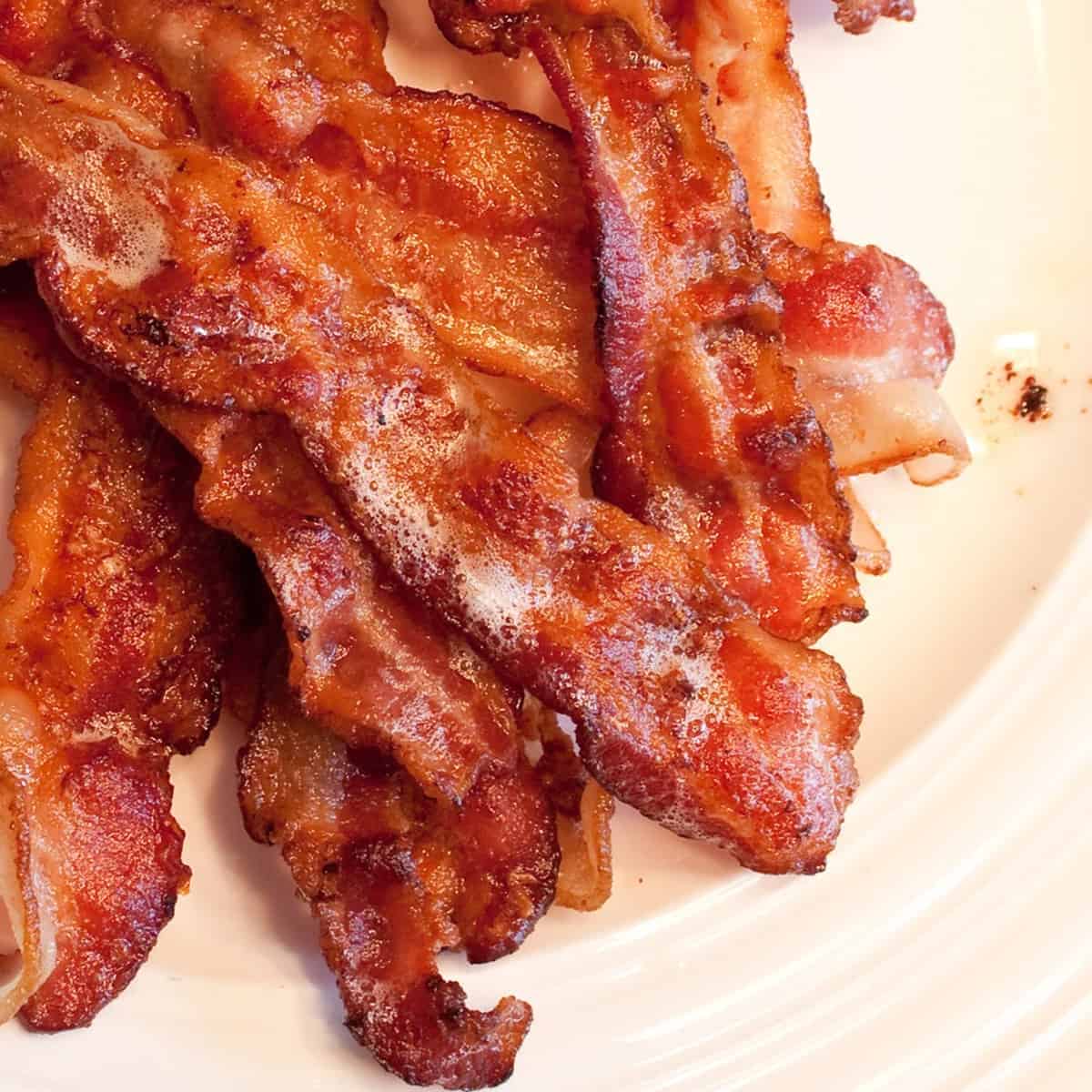
How to Get Your Toddler or Kid to Eat Meat
Preparation and Presentation Matters If Your Child Doesn’t Like Meat
The texture, flavor, and work required to chew and swallow meat all make it a difficult food for kids of all ages to eat. These barriers are a bigger concern for picky eaters, and can leave some children refusing to try meat all together.
Offering a variety of ways that meat is prepared and served is a great way to see what your child prefers and what they aren’t ready to try at the moment. You can experiment from one meal to the next.
While no two kids are the same, there are some commonly accepted texture and flavor preferences that are a safe place to start for kids.
To hone in on the type of meat your child is likely to eat think about the textures and types of foods they already enjoy. This list will help you narrow it down:
1.Soft and Moist VS Crispy and Crunchy: Texture is often the first turn off when it comes to meat, so it is important to make it more appetizing. Kids gravitate to crisp and crunchy textures like crackers and pretzels or soft and juicy textures like fruit.
Think about marinating and cooking meats slowly to achieve softer meats. Pressure cookers and crock pots are also great options for this texture.
To get a crispy texture you may want to cook meat by broiling, air frying, or pan frying.
2. Maximize Flavor: Meat is often dry and sometimes lacks taste, so be creative in boosting the flavor especially with cheeses, peanuts, herbs, seasonings, and sauces.
Salt is okay, as long as it is used in moderation, and that little bit of salt can go a long way in terms of taste. There are also countless salt-free seasoning options that really kick up the flavor of your meat.
It is a common misconception that toddlers and kids cannot handle spices and flavorful seasonings. You might find that adding flavors in this way is the gateway to your kid trying new foods.
If you have prepared meat and your kid doesn’t eat more than a bite or two, take a minute to ask yourself how it might have tasted to them. There is a learning curve here and it may take some experimentation to find what your kid responds to.
And taking a bite or two of something new is still great! Especially with something complex like meat. Keep offering and exposing your child to the foods you want them to eat and they will become more comfortable over time.
If you feel like you’ve tried everything short of standing on your head to maximize flavor and texture, and your kid STILL isn’t eating, get a seat in our Free Picky Eating Workshop “3 Keys to Finally Turn Your Picky Eater Around“.
You’ll learn all my best secrets to help them have a positive relationship with food throughout their life!
How to Serve Meat to Kids Who Won’t Eat Meat Yet
The way you serve meat matters because your child or toddler is eyeing up the food and instantly assessing if it’s something they’re going to be willing to try. The following tips for serving meat, work well for other foods too!
1. Small Bites: Kids bite into a hunk of meat and immediately regret it because it is hard to bite through, or they start chewing and get overwhelmed by how long it takes to chew. This gets better with practice and once you get your kiddo starts eating meat consistently, you can give them larger and larger pieces.
In the beginning, dice meats small or into thin strips. Also, keep meat as flat or thin as possible. Sometimes, a small piece can be thick and that may still be a turn off. I’ve served crumbles of meat at times with success.
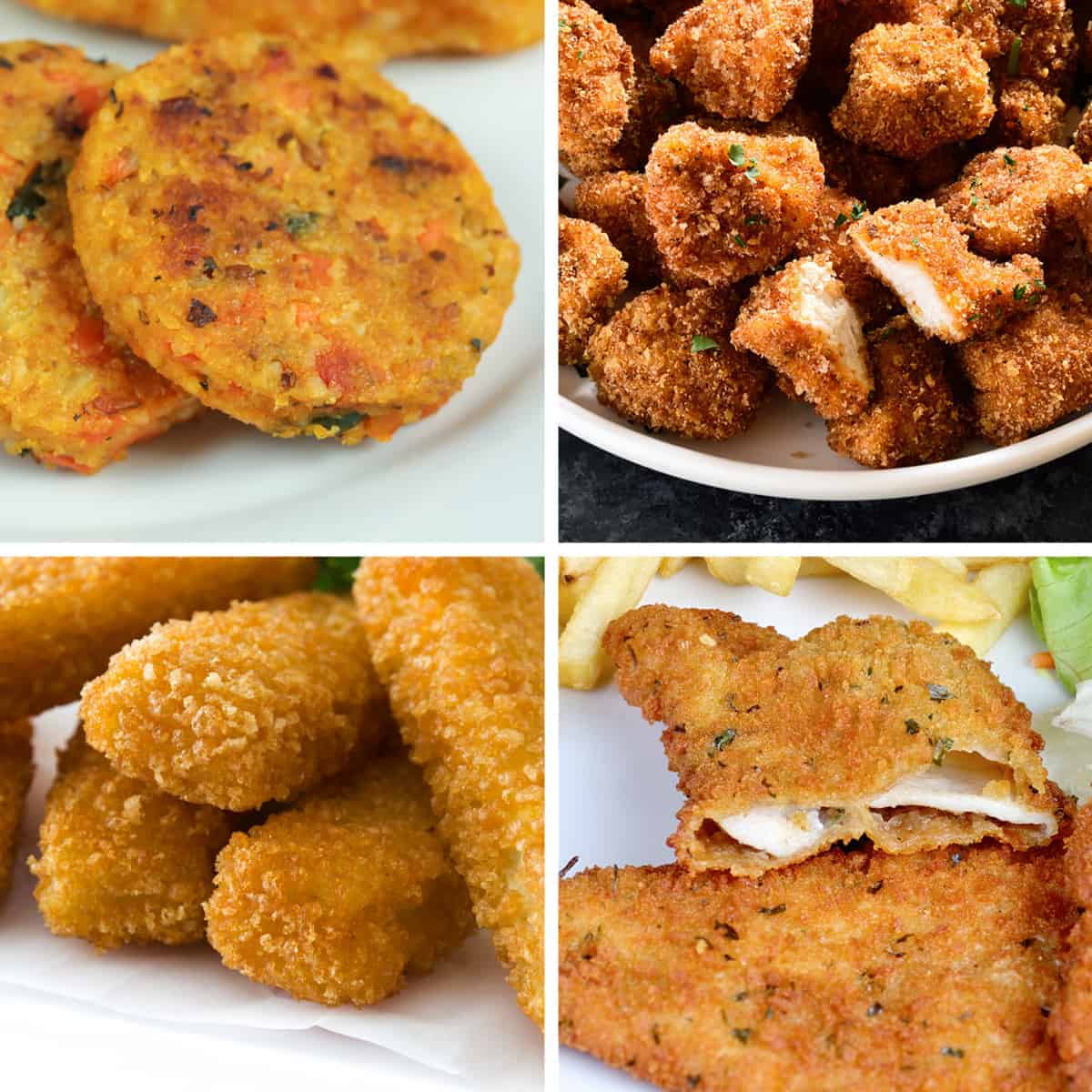
2. Breading: This goes a long way with kids and again should be used in the beginning, then you can slowly transition to meat with less or no breading. There are so many things you can bread with such as: pretzels, cornflakes, panko breadcrumbs, cornmeal, crackers, or Parmesan cheese.
Breading food is a favorite trick of mine as a feeding therapist! Great for meat and veggies.
You will be cutting your meat to bread it, so make those pieces small at first and add seasonings to your breading for lots of flavor!
Putting meat inside of bread is another strategy. Mince it up and place in a cheese quesadilla or a homemade hot pocket. Think about pitas, french bread pizzas, on top of nachos, and sandwiches, too.
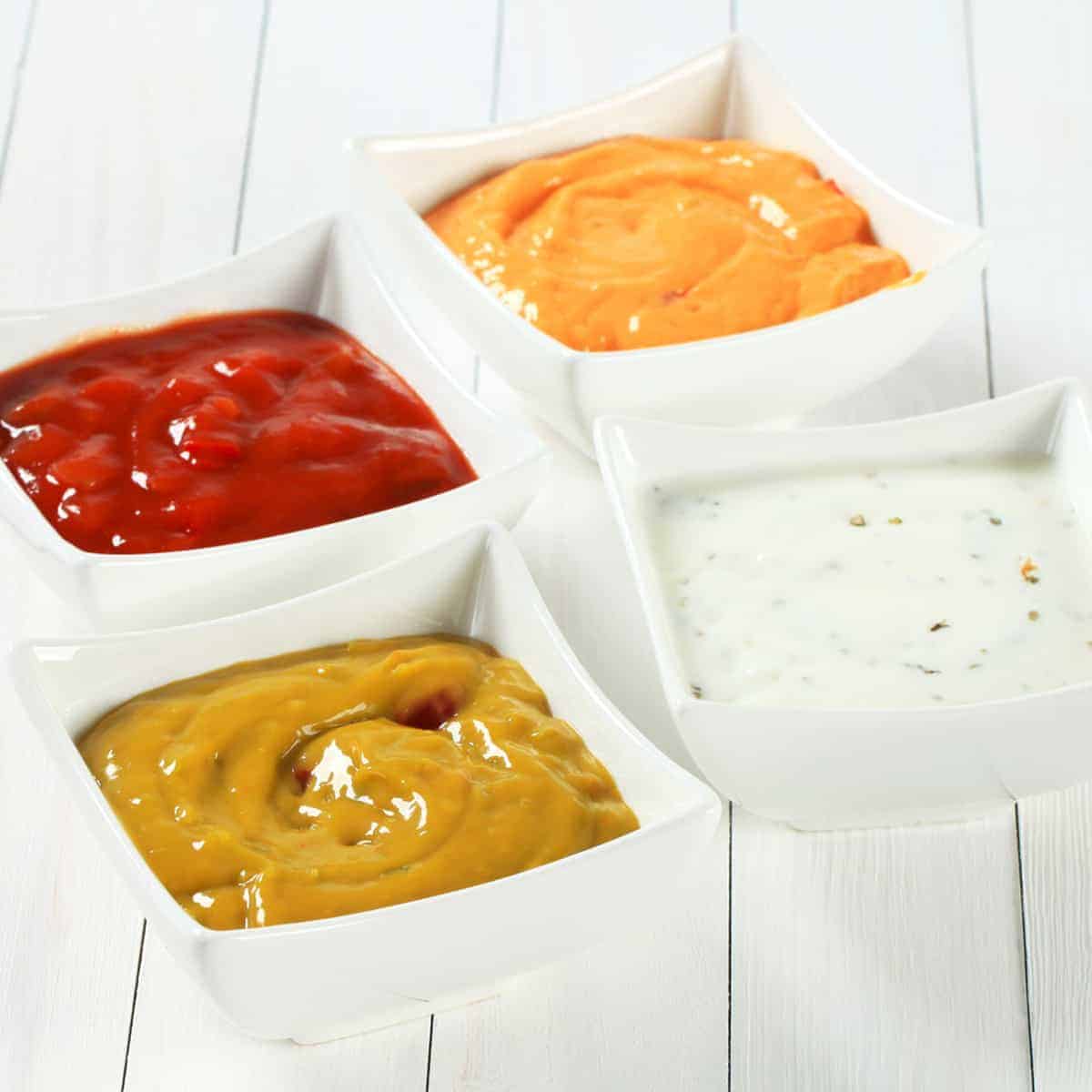
3. Dips – Masking the Taste and Texture: Dips can really help mask the flavor of meat. Initially, allow your kid to use a lot of ketchup, ranch, BBQ sauce, honey, syrup, sour cream, salad dressing, spaghetti sauce, Alfredo sauce, pesto, applesauce, etc.
Think outside the box here, it may seem weird, but if it works, it is a big step in the right direction.
Get more dip ideas for picky eaters and how to serve them so your kid actually tries them
4. Describe Food in Fun Ways: Coming up with fun names for new foods creates a level of intrigue with kids. Maybe the homemade chicken nuggets you made are “little comets” once you dip them into “space sauce”, aka ketchup. Be silly, the kids don’t care if it doesn’t make a lot of sense.
5. Put it on a Stick: Use toothpicks or skewers if your kid is old enough to be trusted safe. This brings an instant fun factor that kids love and is easy to pull off with meat. For more on using sticks, click here.
6. Cook it Together: Getting kids in the kitchen is an incredible way to excite them about the process of cooking and also get them comfortable around the ingredients going into the food they will eat. Kids naturally want to use their hands to explore their world, so allowing them to help prepare dishes with meat breaks down a layer of skepticism or mystery and makes them one step closer to trying it themselves. It may seem like extra work to include them, but this is a tried and true trick from feeding therapy that many kids love.
Build a Bridge to Eating Meat for Your Kid
I’ve touched on this point a few times throughout this post, but you have to start somewhere. When you have a little success, you can build off of it. Once your child is eating a few meats, you can make small changes to those meats to help build their variety.
I discuss this in a lot more detail in our article on Food Chaining. Make sure you read this if you are struggling to get your kid to eat a variety of foods.
Keeping in mind texture and flavor, below is a list of meats that I have seen my own kids and kids I work with gravitate to first. It’s no wonder, these meats are the most flavorful and tend to be crispy or soft.
Following each of these foods, I am giving you some examples of foods to “build a bridge” to more foods. In the meantime, serve a variety of meats and encourage your child to interact with it in some way.
Meat Ideas and Recipes for Picky Eaters, Toddlers, and Kids Who Don’t Eat Meat
Remember, if you are serving a meat your child has never eaten or has refused, think of it as a non-preferred food and serve it alongside something they do like.
-
- Bacon or canadian bacon
- Hot dogs, turkey hot dogs, chicken sausage
- Chicken Nuggets – start with homemade if possible using chicken and then can try turkey or pork nuggets too. Or use very thin store bought chicken nuggets.
- Chicken Skewers – kids love eating meat on a stick and the recipe linked up is very juicy flavorful chicken – not dry!
- Deli Ham or other deli meats
- Meatballs, meatloaf, meat in tacos, meat in pastas like lasagna, ground chicken, hamburger
- Pepperoni, salami, prosciutto, other cured meats
- Beef Jerky – some kids love this tough and flavorful meat
Of course, each child is unique and yours may try something unexpected, use that as your guide to try other similar foods. To help get you started, I’m going to share an easy way to accomplish the flavor and texture with a homemade chicken nugget recipe.
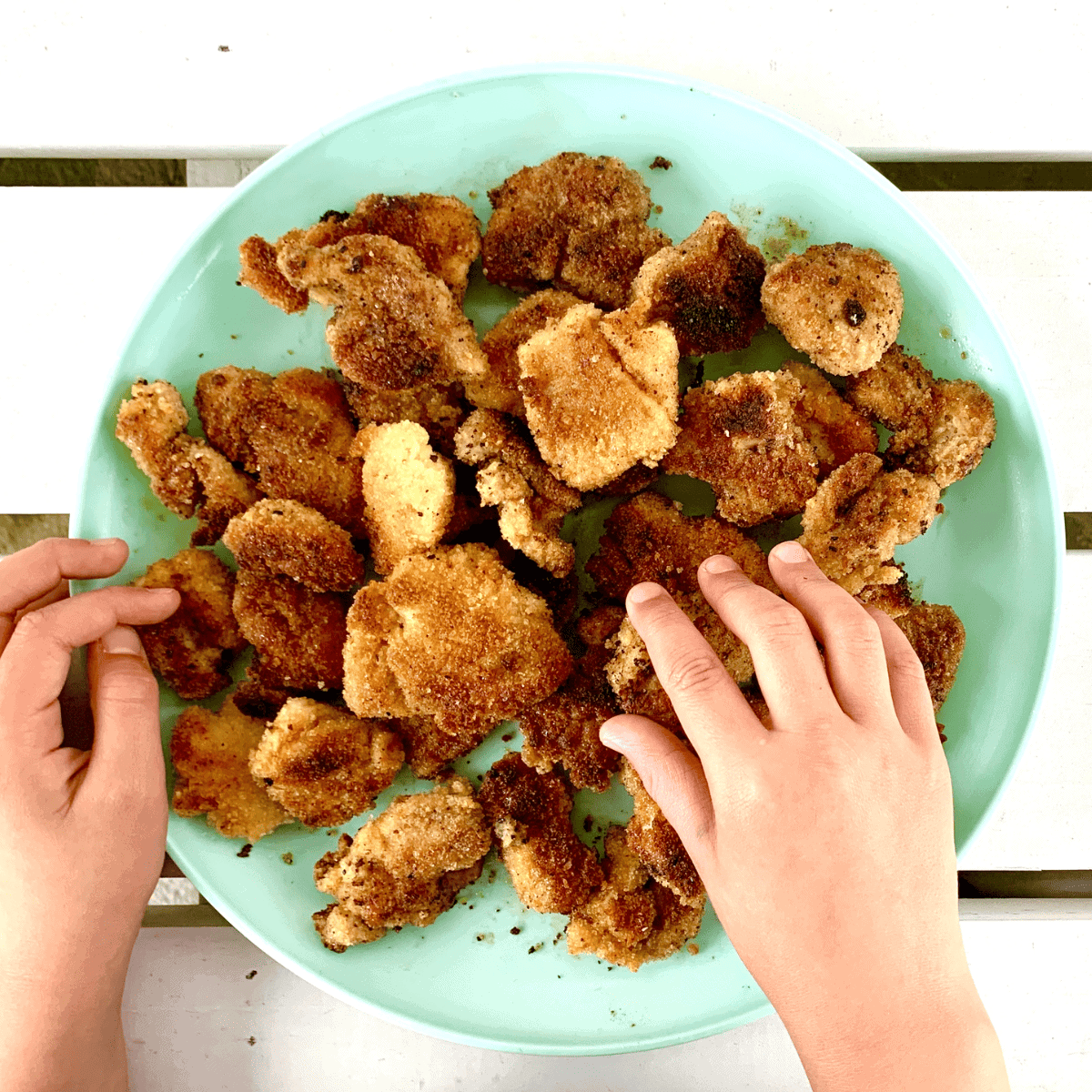
THIS recipe is one of the best ways to get your kid to eat meat. Many students in my picky eating program, Mealtime Works, have used this and got their kid eating homemade chicken nuggets for the first time!
Did you eat meat as a kid? What tips or tricks have you found helpful in getting your kid to eat meat? We’d love to hear below and maybe add it to our list!
Check out High Protein Recipes Kids Will Eat:
Clever Foods to Try with Picky Eaters
Healthy Kid Friendly Meal Recipes
Alisha Grogan is a licensed occupational therapist and founder of Your Kid’s Table. She has over 18 years experience with expertise in sensory processing and feeding development in babies, toddlers, and children. Alisha also has 3 boys of her own at home. Learn more about her here.
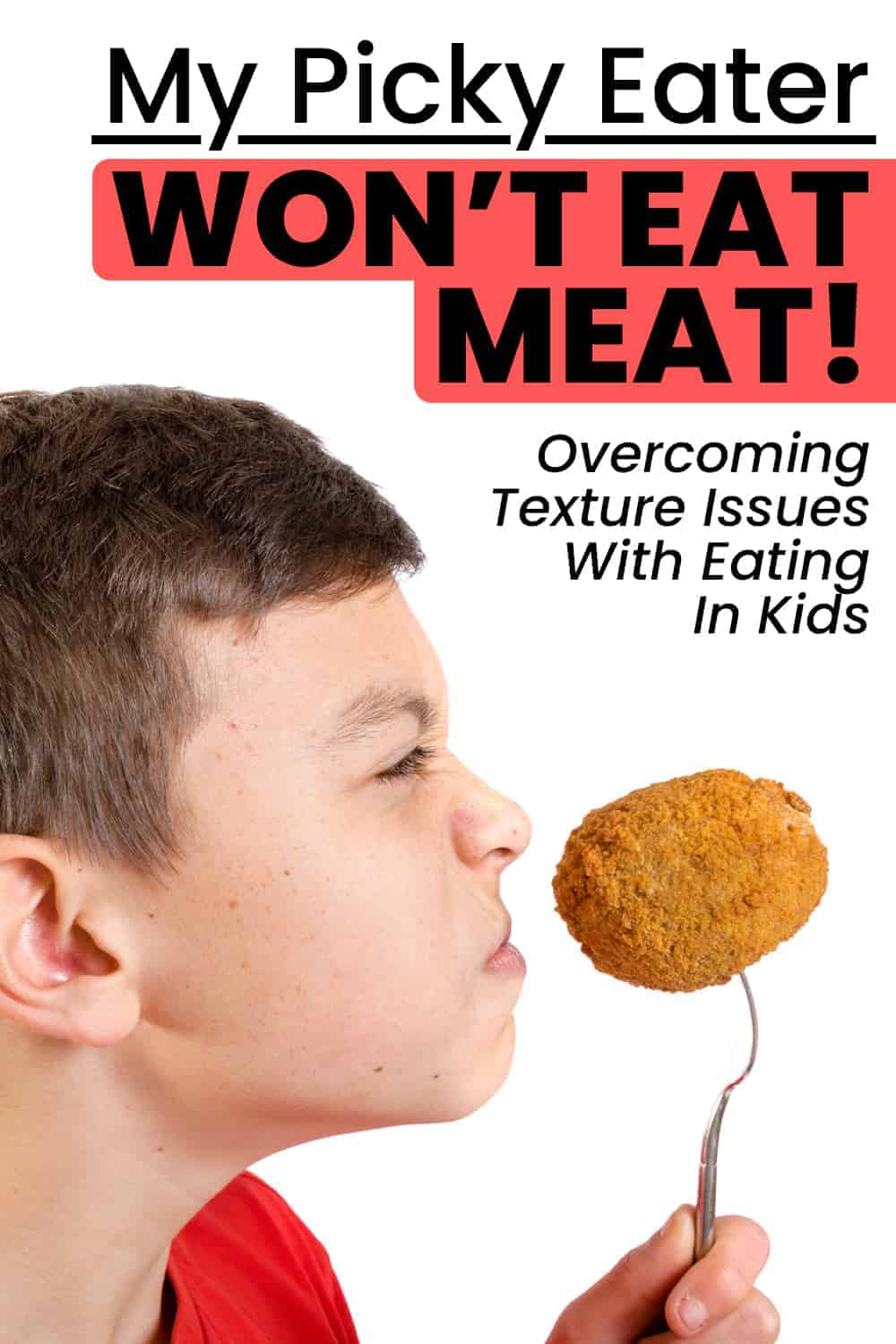


As a kid, I was always a super picky eater. Every meal was a two-hour torture. The food ended cold and ugly. Veggies and fish were never a problem and after some time I accepted to eat chicken breast, but beef was the absolute worst. Years later I learned that I simply hated meat and it turned out that I was not picky at all. When I was 18, I decided to stop feeling guilty for refusing (red) meat. I can recall vividly how stressed and guilty I felt for not being able to finish my plate.
Thanks for sharing with us!!
Best,
Desiree
My child is protien deficient. She rejects almost all forms of protien and for some reason hates it. Sooo we puree spaghetti sauce with meat and beans to a more palatable texture for her. At first I admit I snuck it in but now she is ok with it and aware. She still has protien shakes alot of days but it is something.
When you mention protein sources you totally neglected beans, nuts, broccoli, spinach. Cheese has too much fat in it it and eggs have too much cholesterol.
Johnny, That is only good if your doctor told you lay off the cheese and eggs. Does not apply for a developing toddler. The brain is made of up fat and cholesterol, starve the body of those things and the brain will starve too.
Thank you for these tips! I will try breading different meats now. My son (1.5yrs) used to eat dry chicken, fish and meatballs, now he won’t touch ground beef or chicken (unless it’s crispy and breaded). He seems to be pulling towards either crispy or puree at the moment. Thankfully scrambled eggs are still okay. My blender needs a break, ha ha.
I have a 2 year old who refuses to eat meat. Not even chicken nuggets. I’ve tried small thin diced and even in spaghetti he pushes to side and eats sauce and noodles. Once in awhile he will eat hot dog. Any suggestions? Help!!
Like I said above, meat is really tricky for some kids because of the texture. He will likely sort it out. Try cutting the very edges off of chicken nuggets so it is mostly breading at first and use a dip!
Humans are born herbivores! That’s why he refuses to eat meat. I was like him 25 years ago, i never ate meat in my life! And i’ve never been in a hospital as well.. i’m more than healthy! You are lucky, no need to ask for “Help!!” 🙂
Humans are NOT born herbivores. Quit spreading faux vegan knowledge from a self-righteous point of view. Here is from a vegan explaining it: https://veganbiologist.com/2016/01/04/humans-are-not-herbivores/
So true !!
Sadly, vegans & vegetarians should read what happens & all the illnesses done to their bodies after 20 years of no meat …
We are made from meat,
so can digest & absorb it with in our bodies than vegetables
Even Fruits are better than vegetables, which some animals have to digest twice
Because vegetables are very hard to digest by humans
& please do your research before disagreeing
As I did 😉🌹
Humans have pointy teeth for meat.
Flat teeth for plants.
The end.
No, humans are not herbivores! We’ve hunted since day 1. We ate mostly meat
STOP forcing your kids to an unhealthy and unnatural diet! Go vegan.
Really? Many children are left malnourished as a result of a strict vegan diet. It results in hospitalization and even death. There is no evidence to prove that it strengthens the immune system. I don’t recommend a vegan diet for anyone unless you want to end up sick, miserable and shaky. I am much happier with grass-fed beef and free range chicken.
Not at all, I think its great if you and your kids are vegan and totally support that. This article is to help parents whose children have difficulty eating meat.
Humans have pointy teeth for meat.
Flat teeth for plants.
The end.
We’re homosapiens and our ancestors were hunter gatherers. They ate what they hunted and sometimes went w/o bc they got nothing. The human brain is mostly fat. Children need fat like breast milk is mostly fat. They need the real butter and nothing diet or ”non fat”.
Thanks for this! These are some great ideas! My 2 year old used to do really well with meat. He liked turkey meatballs, chicken tenders, pulled chicken from the crock pot and lately he’s been turning his nose up at all of the above. Could this be a developing problem or is he just being 2?
My son used to it bland chicken dipped in ketchup and nuggets easily. Now at 4, he knows that chicken comes from hens, and refuses to touch any animal products, including egg and meat. I give him minced meat camouflaged in rice or deep fried samosas, but I lie to him about the content. As long as he believes there isn’t any chicken in it, he will eat it. But this strategy won’t last long and I feel guilty lie ing to him.
This is a tricky one! Wow, at 4! I hate to pass the buck here, but I think this is a judgement call for a parent. I totally understand how you feel. If it were my kid, I would talk about other protein sources with him and let them help choose some things to eat in advance that you could all eat together. I would continue to try, but talk about what is appropriate dinner conversation. It may be a phase that passes.
GREAT ideas! My boys will eat breaded chicken nuggets and breaded shrimp. I wonder if they’d eat tiny breaded turkey meatballs?
I love that idea! I’m even thinking turkey crumbles, so small they can be eaten in one bite!
Most kids eat what they are given if you start young. If you’re one of those parents who doesn’t like something and tells your child “You don’t like that”, you are developing a picky eater. There are exceptions and some children just don’t like certain foods/textures. But I’ve been a mother, a child care provider and now a grandmother. First hand I’ve seen kids happily try foods and most of the time enjoy them Then mom comes along snd tells them they don’t like it and boom! That bubble just burst. Give them a chance to try new things. Then if they refuse it, you at least tried! My granddaughter has figured out several foods were favorites even after being told she wouldn’t like it. ❤️